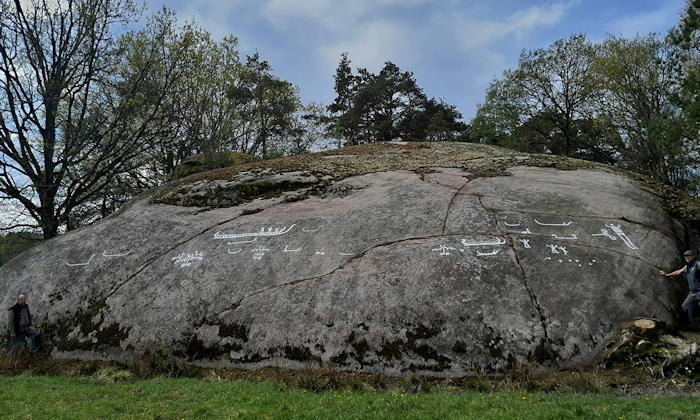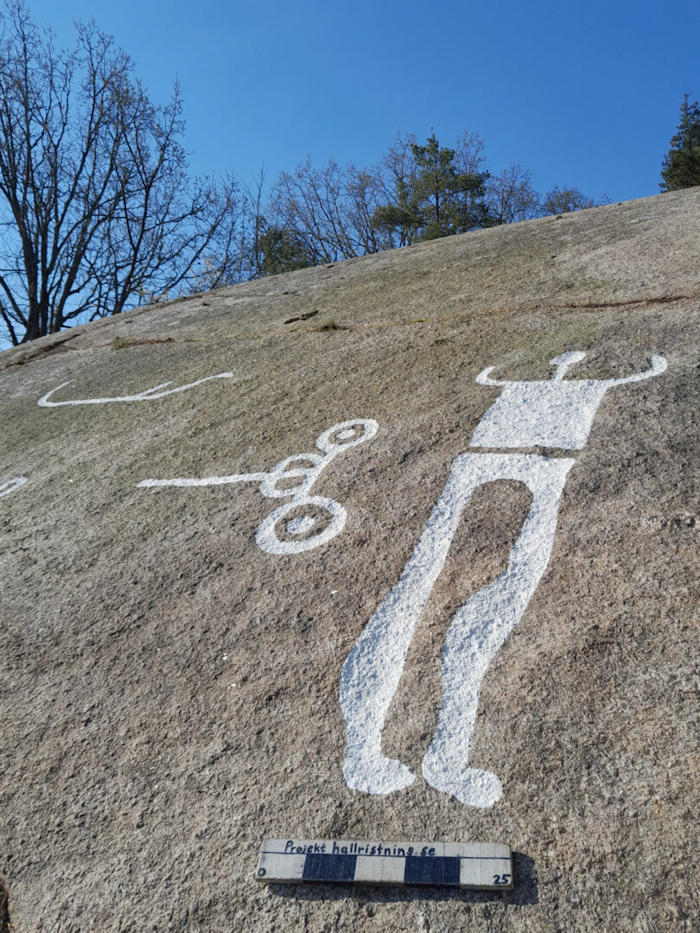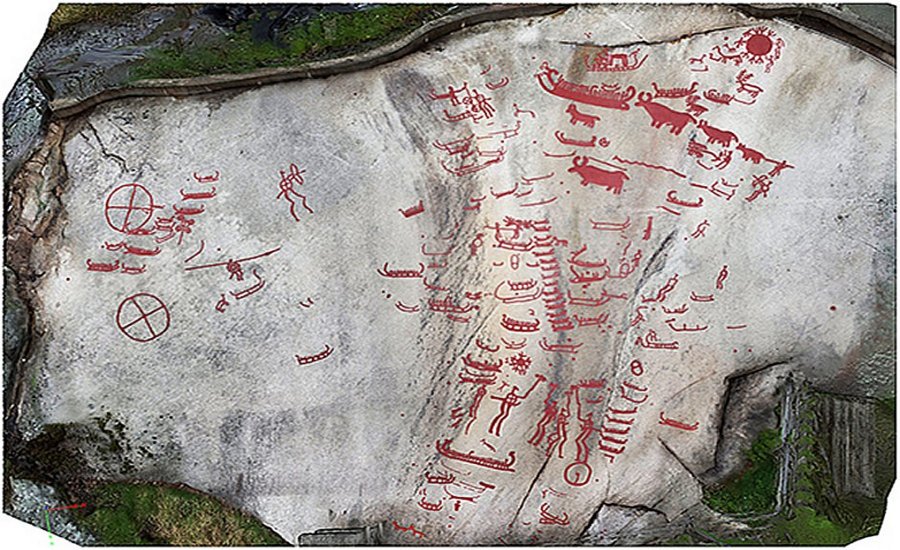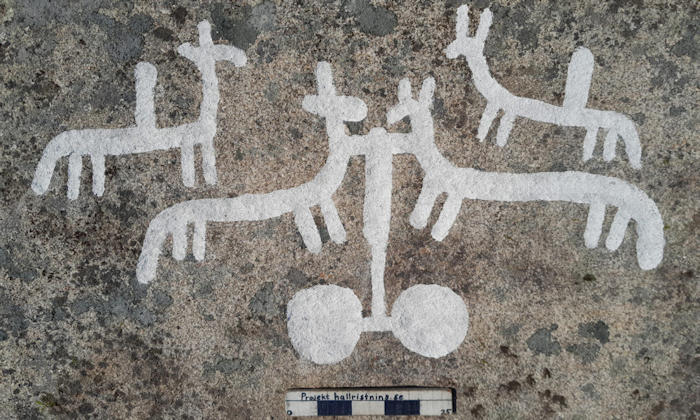Ellen Lloyd – AncientPages.com – Many fascinating archaeological findings have been made in Sweden, but when it comes to petroglyphs, this is one of the biggest discoveries in a long time.
Not only are the recently found petroglyphs large in size, but they are also unusual due to their vertical shapes, making it much easier for scientists to date the prehistoric drawings.

Scientists discovered many fascinating new petroglyphs in Bohuslän. Credit: Stiftelsen för dokumentation av Bohusläns hällristningar
The discovery was made in the Kville parish in Tanum municipality, Bohuslän, Sweden. The unearthed rock carving panel is 15 meters long and consists of about 40 figures. These are thirteen ships, nine horses, seven human-like figures, and four chariots.
The petroglyphs were not detected before because they are located on a pasture covered in moss, making the ancient drawings more or less invisible. When scientists inspected the ground they noticed a small part of the ship petroglyph hidden beneath the moss, and they started to investigate further.
According to archaeologist Andreas Toreld these petroglyphs are huge in size. One of the rock carvings depicting a ship is almost 2 meters, and another one of a human being is one meter.
“The motifs are not unique, but the location on an almost vertical outcrop is unusual,” says Toreld, who is working with his colleague mapping carvings for the Foundation for Documentation of Bohuslän’s Rock Carvings.

The Kville petroglyphs are very large in size. Credit: Stiftelsen för dokumentation av Bohusläns hällristningar
As previously discussed on Ancient Pages, “Scandinavia has the largest concentration of Bronze Age rock art in Europe. Approximately thirty thousand registered sites depict figurative art (human and animal figures are frequent subjects), abstract, and other images such as cup marks and cupules.
At Tanum, near Tanumshede, Bohuslän, Sweden, there is a high concentration of petroglyphs carved from the Nordic Bronze Age rocks. They are known as ‘Tanum Petroglyphs.’

Tanum’s petroglyphs. Image credit: Svenskt HällristningsForskningsArkiv
The ‘Tanum petroglyphs’ contain thousands of images carved on over 600 panels. The ancient site covers an area of about 51 hectares (126 acres (0.5 km²).”
The newly discovered rock carvings are near the famous Tanum petroglyphs. The Kville petroglyphs were created about 700 -800 B.C. “The fact that the slab is almost vertical means that the carving can be dated with great precision. Carvings were usually made on flatter slabs, which you could stand on and carve. But here, the carvers must have stood in boats,” Forskning och Framsteg reports.
Scientists say the ancient carving was made when the rock was on an island. It must have been visible from far and wide, as it was made in the part of the rock just above the waterline that is always darkened by cyanobacteria from the sea. When you carve, the almost white slab is exposed.

Some of the rock carvings depict horses. Credit: Stiftelsen för dokumentation av Bohusläns hällristningar
The period when it was carved was the peak of petroglyphs when both the most and the most beautiful carvings were created. later, the style of the petroglyphs changed.
See also: More Archaeology News
“People continued to carve at least until around the birth of Christ, but the ships became simpler. During the Younger Bronze Age, from which this one comes, the style was closest to Baroque. Everything was bloated and exaggerated, but perhaps not so realistic,” says Andreas Toreld.
This is a major archaeological discovery that will be documented, studied, and eventually provide more knowledge about the art of ancient petroglyphs in Sweden.
Written by Ellen Lloyd – AncientPages.com





